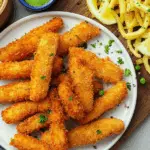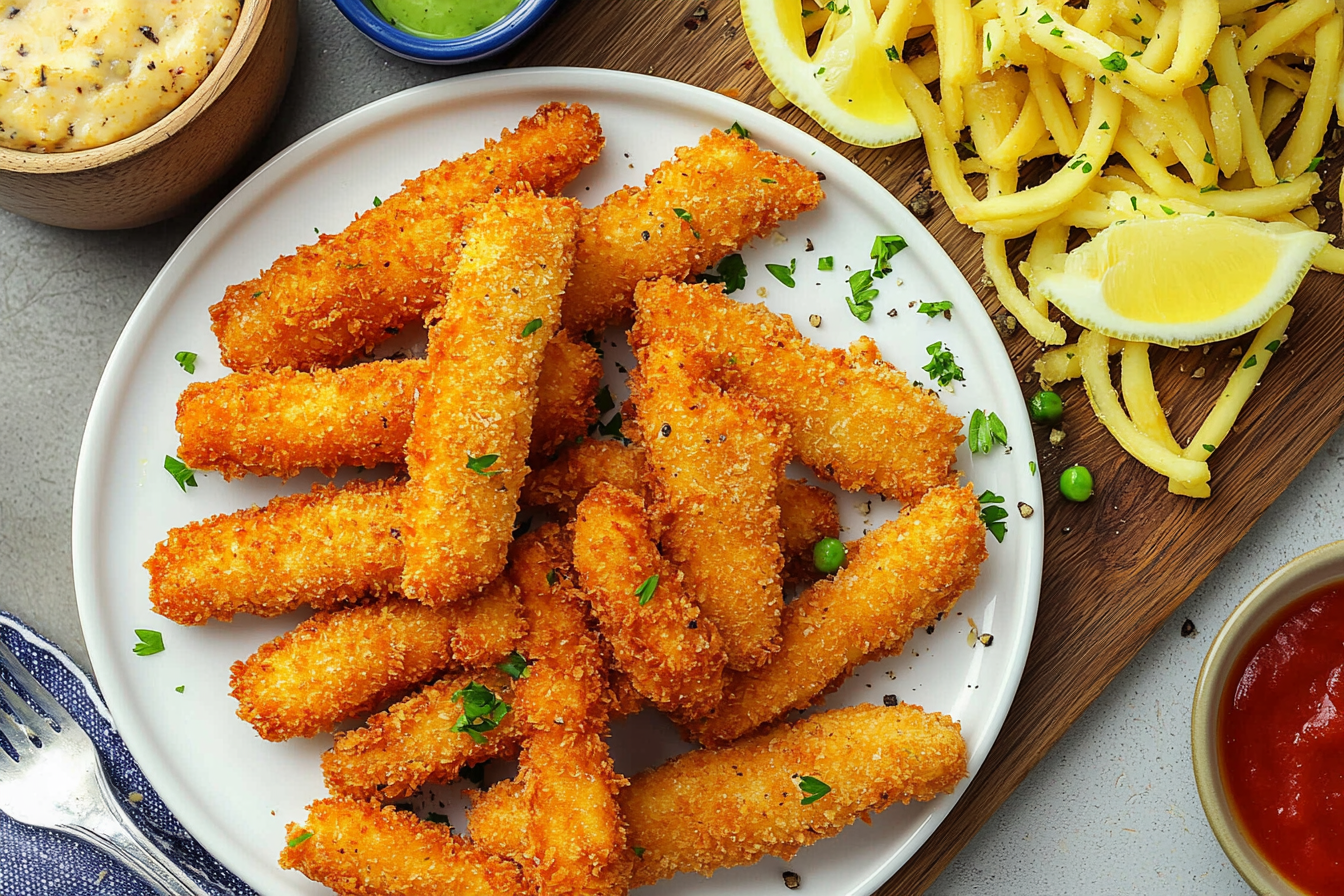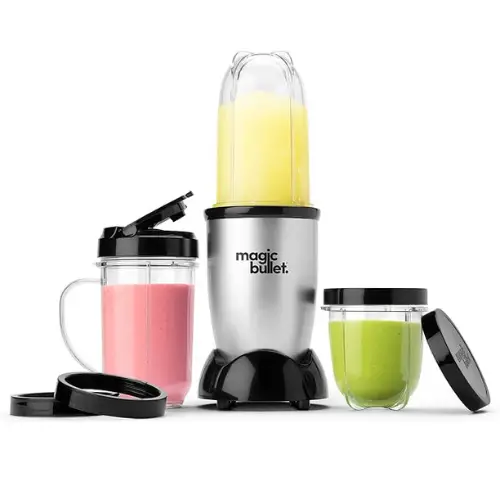Bring the taste of the sea home with Homemade Salmon Fish Fingers, a dish that’s crispy on the outside, tender on the inside, and packed with rich, savory flavor. Perfect for kids and adults alike, this recipe transforms simple ingredients into a family-favorite meal that’s both nutritious and irresistibly delicious. Whether you’re looking for a fun dinner idea or a healthier alternative to takeout, these salmon fingers are a must-try that will brighten any mealtime.
Disclosure: This post contains affiliate links.If you click and make a purchase, I may earn a small commission at no extra cost to you.
Why You’ll Love This Recipe
- Family-Friendly Favorite: Loved by kids and adults, these fish fingers offer a familiar comfort with a nutritious twist.
- Simple Ingredients: Uses common pantry staples combined with fresh salmon for great flavor and wholesome nutrition.
- Crispy and Tender: The crunchy coating contrasts beautifully with the soft, flaky salmon inside.
- Quick to Prepare: Ready in under 30 minutes, ideal for busy weeknights or casual gatherings.
- Customizable Flavors: Easily adapted with spices and coatings to suit your family’s taste buds.
Ingredients You’ll Need
These ingredients are easy to find but vital for achieving the perfect balance of taste, texture, and vibrant color in your Homemade Salmon Fish Fingers. Each element plays a role whether it be binding the fish, adding crunch, or boosting flavor.
- Fresh Salmon Fillets: The star of the dish, providing rich omega-3 fats and tender flesh.
- Breadcrumbs: For that crucial crispy coating, choose panko for extra crunch.
- Eggs: Bind the breadcrumbs to the salmon and add moisture.
- All-Purpose Flour: Helps the coating stick while providing a thin barrier for perfect crispiness.
- Lemon Zest: Adds a fresh, citrusy brightness that enhances the salmon flavor.
- Salt and Pepper: Essential for seasoning and bringing out the natural flavors of the fish.
- Olive Oil or Cooking Spray: For pan-frying or baking, ensuring golden color and preventing sticking.
Variations for Homemade Salmon Fish Fingers
Feel free to personalize your Homemade Salmon Fish Fingers by trying different coatings, spices, or cooking methods. This recipe is wonderfully flexible whether you prefer healthier swaps or flavor boosts.
- Gluten-Free Option: Swap regular breadcrumbs with almond flour or gluten-free panko to accommodate dietary needs.
- Spicy Kick: Add smoked paprika, cayenne, or chili powder to the breadcrumb mixture for a flavor punch.
- Herb Infusion: Mix in fresh dill, parsley, or chives for an herbal lift that pairs perfectly with salmon.
- Baking Instead of Frying: For a lighter recipe, bake the fish fingers on a greased sheet instead of frying.
- Cheese Crust: Sprinkle grated Parmesan into your breadcrumbs for an irresistible cheesy crust.

How to Make Homemade Salmon Fish Fingers
Step 1: Prepare the Salmon
Start by rinsing and patting dry your fresh salmon fillets, then cut them into finger-sized strips about 1 inch wide. This size helps them cook evenly and makes them easy to handle for dipping and coating.
Step 2: Set Up Breading Stations
Arrange three shallow dishes: one with flour, lightly seasoned with salt and pepper; one with beaten eggs; and one with breadcrumbs mixed with lemon zest and optional herbs or spices. This setup makes the breading process quick and neat.
Step 3: Coat the Salmon Strips
Dip each salmon finger into the flour first, shaking off any excess, then into the beaten eggs, and finally coat with the breadcrumb mixture, pressing gently to ensure an even, thorough covering.
Step 4: Cook to Crispy Perfection
Heat a non-stick pan with olive oil over medium heat. Place the coated salmon fingers in the pan in a single layer, cooking for about 3-4 minutes on each side until golden brown and cooked through. Alternatively, bake in a preheated oven at 400°F (200°C) for 15-18 minutes, flipping halfway.
Step 5: Serve Warm
Once cooked, transfer the Homemade Salmon Fish Fingers to a plate lined with paper towels to absorb any excess oil. Serve immediately for the best crispy texture and flavor.
Pro Tips for Making Homemade Salmon Fish Fingers
- Fresh is Key: Use the freshest salmon possible for the best texture and flavor.
- Don’t Overcrowd the Pan: Cook fish fingers in batches to keep the oil temperature steady and avoid sogginess.
- Press the Coating Firmly: Ensures the breadcrumb crust stays intact during cooking.
- Rest Before Serving: Let fish fingers rest a minute or two after cooking to retain juiciness.
- Use Parchment Paper: When baking, line your tray with parchment for clean cleanup and even cooking.
How to Serve Homemade Salmon Fish Fingers
Garnishes
Brighten your dish with fresh lemon wedges, a sprinkle of chopped parsley or dill, and a dash of flaky sea salt for that little gourmet touch.
Side Dishes
Pair your fish fingers with homemade tartar sauce, a crisp green salad, oven-baked potato wedges, or steamed vegetables for balanced, satisfying meals that everyone will love.
Creative Ways to Present
Serve on a platter with a variety of dipping sauces in small bowls for a fun, interactive family meal, or make finger food party platters by adding veggies and colorful dips on the side.
Make Ahead and Storage
Storing Leftovers
Keep any leftover Homemade Salmon Fish Fingers in an airtight container in the refrigerator for up to 2 days, making sure they’re fully cooled before storing to maintain crunch.
Freezing
Freeze raw, breaded salmon fingers on a baking sheet until solid, then transfer to a freezer bag for up to one month. This way, you can quickly bake or fry them straight from frozen when needed.
Reheating
To keep that crisp exterior, reheat fish fingers in an oven or air fryer at 350°F (175°C) for 8-10 minutes instead of microwaving, which can make them soggy.
FAQs
Can I use frozen salmon for Homemade Salmon Fish Fingers?
Yes, but make sure to fully thaw and pat dry the salmon before preparing to prevent excess moisture, which can affect the coating’s crispiness.
Are Homemade Salmon Fish Fingers healthy?
Absolutely! Salmon is rich in omega-3 fatty acids and protein; by making fish fingers at home, you control the ingredients and avoid preservatives and excess fats from store-bought options.
What’s the best way to cook these fish fingers for kids?
Baking is an excellent option for a healthier meal, and it yields nicely crisp fingers without the need for frying oil, making it safer and less messy.
Can I make these gluten-free?
Yes! Substitute regular breadcrumbs with gluten-free breadcrumbs or crushed nuts and use a gluten-free flour alternative to coat the fish.
How do I know when the fish fingers are cooked?
The salmon should be opaque and flake easily when tested with a fork, and the coating should be golden and crunchy—usually around 3-4 minutes per side when pan-frying.
Final Thoughts
Trying this Homemade Salmon Fish Fingers recipe is a great way to bring the joy of fresh seafood into your home with minimal fuss and maximum flavor. Whether you’re cooking for kids or adults, the crispy coating paired with tender salmon is sure to become a go-to meal in your kitchen. So grab some fresh salmon and get cooking—you won’t regret it!
Related Posts
- Easy Taco Lasagna Recipe for a Simple Weeknight Dinner
- Crockpot Hamburger Potato Casserole Recipe
- Best Hawaiian Roll Cheeseburger Sliders Recipe for Any Gathering

Homemade Salmon Fish Fingers
- Prep Time: 10 minutes
- Cook Time: 15 minutes
- Total Time: 25 minutes
- Yield: 4 servings (about 12-16 fish fingers) 1x
- Category: Appetizers
- Method: Baking or Pan-Frying
- Cuisine: American
- Diet: Gluten-Free option available
Description
Homemade Salmon Fish Fingers are a crispy and tender seafood treat perfect for family meals. These fish fingers feature fresh salmon coated in a crunchy breadcrumb mixture with bright lemon zest, seasoned simply with salt and pepper. Ready in under 30 minutes, they offer a nutritious, omega-3 rich alternative to traditional fish fingers, suitable for kids and adults alike. You can bake or pan-fry them and customize the flavors with herbs, spices, or gluten-free ingredients.
Ingredients
Main Ingredients
- Fresh Salmon Fillets - 1 lb (about 450g), cut into 1-inch wide strips
- Breadcrumbs (preferably panko) - 1 cup
- Eggs - 2 large, beaten
- All-Purpose Flour - 1/2 cup
- Lemon Zest - zest of 1 lemon
- Salt - 1 tsp, divided (for flour and salmon seasoning)
- Black Pepper - 1/2 tsp, divided
- Olive Oil or Cooking Spray - for frying or baking
Instructions
- Prepare the Salmon: Rinse and pat dry fresh salmon fillets. Cut into finger-sized strips approximately 1 inch wide to ensure even cooking and ease in handling during breading.
- Set Up Breading Stations: Arrange three shallow dishes: one with the all-purpose flour lightly seasoned with half the salt and pepper, one with beaten eggs, and one with breadcrumbs mixed with lemon zest and any optional herbs or spices you choose to add.
- Coat the Salmon Strips: Dip each salmon strip first in the flour, shaking off excess, then into the beaten eggs, and finally coat evenly with the breadcrumb mixture, pressing gently to ensure the coating sticks well.
- Cook to Crispy Perfection: Heat a non-stick pan with olive oil over medium heat. Fry the salmon fingers in a single layer for about 3–4 minutes on each side until golden brown and cooked through. Alternatively, preheat the oven to 400°F (200°C) and bake on a greased or parchment-lined tray for 15–18 minutes, flipping halfway to ensure even cooking.
- Serve Warm: Transfer the cooked salmon fingers to a plate lined with paper towels to absorb excess oil if fried. Serve immediately for best texture and flavor.
Notes
- Use the freshest salmon possible to enhance texture and flavor.
- Do not overcrowd the pan when frying to maintain oil temperature and crispiness.
- Press breadcrumb coating firmly onto the salmon strips to keep it intact during cooking.
- Allow fish fingers to rest for a minute or two after cooking to retain juiciness.
- When baking, line your tray with parchment paper for easy cleanup and more even cooking.
Nutrition
- Serving Size: 4-5 fish fingers (approx. 150g)
- Calories: 280 kcal
- Sugar: 0.5 g
- Sodium: 350 mg
- Fat: 15 g
- Saturated Fat: 2.5 g
- Unsaturated Fat: 10 g
- Trans Fat: 0 g
- Carbohydrates: 15 g
- Fiber: 1 g
- Protein: 22 g
- Cholesterol: 90 mg




